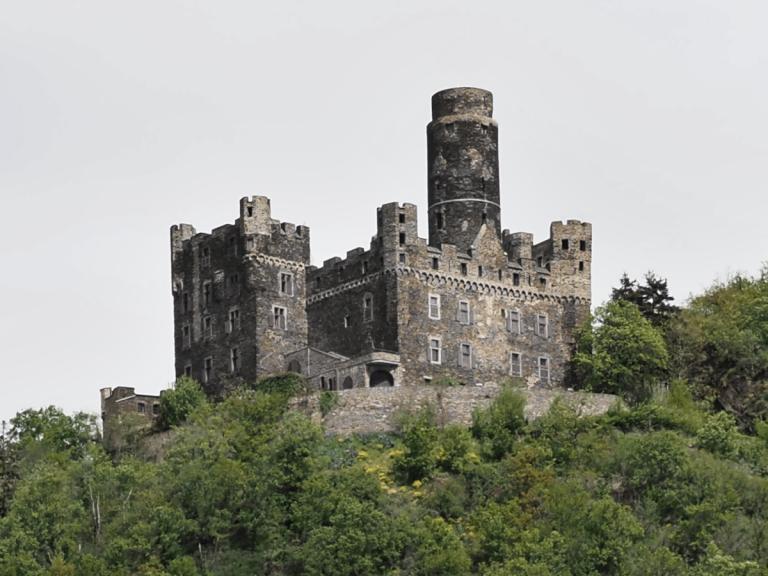There is always a need for simple pleasures in life: things that cost little or nothing but that make us happy, even if only for a short time. The “stop buying coffee!” puritans who would have us do nothing but work and save non-stop take the joy out of life as much as the Calvinist puritans who settled New England 400 years ago and fined people for celebrating Christmas.
At a time when the world is stressful for most of us and I’m struggling to deal with both physical complications and “life issues” I need all the simple pleasures I can get.
One of my favorite simple pleasures is watching old horror movies. I don’t want to be scared – I want to be fascinated. The horror movies of the pre-gore era do a great job of that. I have a special fondness for the movies of the 1960s and 1970s – the ones I watched as a kid on late night TV (usually heavily censored) and the ones I couldn’t see because they simply weren’t available in the days of three TV stations and two duplex movie theaters.
I picked some the best for last October’s post Streaming Revenge: The Top 10 Horror Movies I Wasn’t Allowed To Watch As A Kid.
I’m still watching old horror movies. I’ve already seen most of the good ones and I’m working my way through a list of “well, maybe this one will be OK” films. I’m watching more giallo – the Italian murder mysteries of the 60s and 70s that are more about visual imaginativeness than clear storytelling. I’m mixing in some newer stuff – I watched Abigail last weekend and I loved it.
I’m keeping notes for another October movie feature, but I recently watched three classic vampire movies that I want to talk about now. One you probably know, but it’s worth revisiting. The other two were new to me, and they may be new to you too.

Vampyr (1932)
A traveler stops at an inn, only to find that the daughter of the family that runs it is being slowly drained by a vampire. Can they find the vampire and kill it before she becomes a vampire herself?
This was Danish director Carl Theodor Dreyer’s (1889 – 1968) first talkie, and it shows. While there is some dialogue (in German – the version I watched had English subtitles), Vampyr goes for long stretches where no one says anything – all the storytelling is visual. The effects look simplistic by today’s standards, but that just makes them that much more impressive, considering that everything had to be done physically and that Dreyer did not have the financial backing of a major movie studio. Many of the actors were locals with no acting experience.
But if you think all that means Vampyr looks like something from Ed Wood, you’d be very wrong. This is a visually brilliant movie that I enjoyed very much.
Vampyr credits J. Sheridan Le Fanu as a writer – it’s supposedly an adaptation of Carmilla (1872). I would say it’s more “inspired by” than “adapted from” but some of the basic story elements are there.
Vampyr runs 1:15. I saw it on Max – as I write this it’s also available on Amazon and several other streaming services.
Blood and Roses (1960)
I have been on a 30-year quest to see Blood and Roses. I heard about it sometime during my vampire obsession in my late 20s and early 30s. All I knew was that it was an adaptation of Carmilla and that it was made by French director Roger Vadim (1928 – 2000), best known (to me, anyway) for Barbarella (1968) and for being married five times, including to Brigitte Bardot and Jane Fonda.
But Blood and Roses was simply not available. It was never on TV, never on cable, and never on video. When DVDs came out I could never find it in an edition I was sure would play on a North American player. When I started keeping a spreadsheet of movies I want to watch (yes, I’m a geek, but you already knew that) Blood and Roses was one of the first entries, but with a blank in the “source” column.
And then last week I found it on Plex.
Plex is my least favorite streaming service. It’s low-res, they run a million ads, and I can’t get it on my TV (yes, I know there are several ways to send a computer signal to a TV, but given the first two problems I’d rather watch it on the computer anyway). But it’s free, and as of a short time ago, they have Blood and Roses available.
Annette Stroyberg (Vadim’s second wife, in between Bardot and Fonda) plays Carmilla. She’s quite good, but this was 1960, and while European films did not face the level of censorship that American films did, there were still things that simply could not be done. Blood and Roses is very different from Hammer Films’ The Vampire Lovers, made just ten years later. Stroyberg’s Carmilla is in a love triangle, jealous that her male cousin is marrying another woman and not her.
Blood and Roses couldn’t possibly live up to 30 years’ of anticipation. But taken for the movie it is, it’s excellent. The story is good, even if it has little to do with Le Fanu’s novella. The acting is very good, and the final product is an intriguing movie that I’m very glad I finally got to see.
Blood and Roses is in French with English subtitles. It runs 1:19. Plex is the only streaming service I can find that has it. There is a Korean DVD available from Amazon that supposedly will play on US players, but comments say it’s not a good transfer. Hopefully someone will give it a full Blu-Ray restoration sometime soon.
The Hunger (1983)
The Hunger is a vampire movie with an unusual twist, based off the 1981 novel by Whitley Strieber (which I have not read). It was directed by Tony Scott (1944 – 2012) who went on to make Top Gun and several other big budget action films. It made my 31 Movies For Halloween list in 2016 and I try not to duplicate movies on my blog recommendations. But I watched it again last week and that has me wanting to write about it again.
I can’t remember the last time I saw The Hunger. I know I saw it on video some time in the late 80s or early 90s. I want to say I’ve seen it on cable a time or two after that, but I can’t be sure. It’s one of those movies that made such an impression on me it always felt like I watched it just a short time ago, but it may have been 20 years or more.
The Hunger stars Catherine Deneuve (who had a child with Roger Vadim, a strange way of tying all of these movies together) as Miriam, a vampire who has no fangs but who carries a razor-sharp knife in an ankh pendant – which points toward her origin. David Bowie is John, her 200-year-old lover who is starting to age – as her previous lovers have aged. They consult Sarah, a gerontology researcher played by Susan Sarandon.
Without giving too much away – on the chance that some of you haven’t seen it – things go badly for John. Miriam chooses Sarah as her next lover, but things don’t work out quite like she planned.
Two things struck me as I watched The Hunger last week. First, while it’s good, it’s not as great as I remembered. The middle is slow and the end is abrupt and not entirely clear.
But the opening sequence remains one of the best in any movie, vampire or otherwise. The goth club, Peter Murphy, and “Bela Lugosi’s Dead.” The drive home and the seductions. The shrieking monkeys. The ankhs and the blood. Trio in E Flat by Schubert.
It won’t be 20 years before I watch it again.
The Hunger runs 1:37. I rented it on Amazon Prime – it’s also available on a couple other streaming services.
















